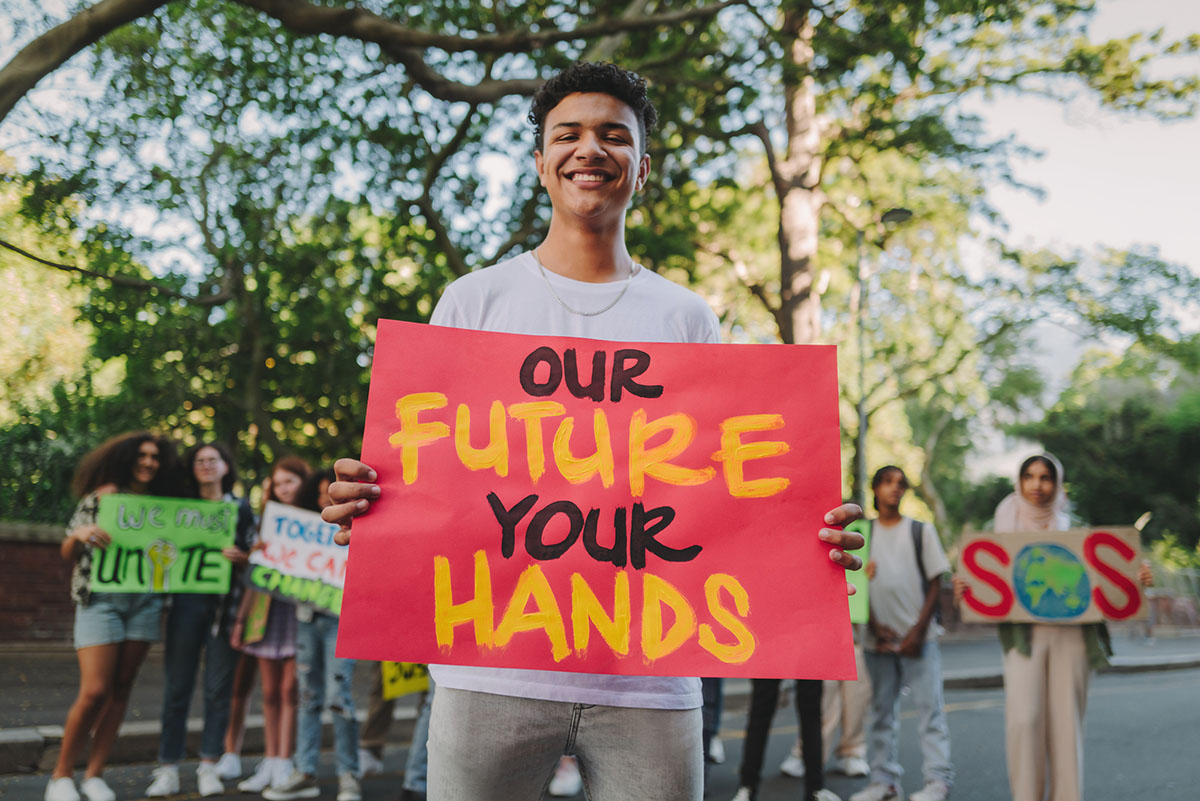Blog
How Positive Teacher-Student Relationships Impact Student Motivation
Eric Kalenze, Search’s Director of Education Solutions, will be appearing in this space occasionally to share more about our research, our research-guided school improvement work with schools, our REACH Framework, and practical items to keep in mind about student motivation. Additionally, we’ll bring some guest-bloggers aboard so they can share, practitioner-to-practitioner, what using REACH-based practices and resources looks like in their classrooms.
By Eric Kalenze
In my last blog post, I talked about how useful Search Institute’s REACH research and resources would’ve been when I was in the classroom and seeking to (a) maintain challenging academic expectations while (b) motivating students toward reaching those expectations.
And having studied and worked with schools, I know managing both is a challenge that goes outside of just my own teaching experience. Indeed, I know well that this dual challenge is both very common and very tricky.
As tricky as effectively motivating students is for many of us, I believe the most difficult aspect to get our strategic, action-oriented arms around is the one we’re often told is the most important–forming positive, productive teacher-student relationships.
Positive Teacher-Student Relationships are a Big Deal–Tell Us Something We Don’t Know, Right?
The tricky part isn’t knowing that relationships are a big deal–the reminders are everywhere.
-
Child-development researchers have identified quality relationships as like an ‘active ingredient’ in making our academic interventions work;
-
Schools have amplified their emphasis on positive classroom-level relationships to complement their work reducing exclusionary discipline and instructional practices; and, finally,
-
We all have heaps of personal, anecdotal proof from our own youth about how a relationship with an adult here or there really helped keep us on track and shape us into who we are today.
So…Relationships are important? Tell us something we don’t know. Right?
The Difficulty of Making Relationships Happen
Actually making the relationships happen, though, is another matter altogether.
Some of us, for example, might not be all that interested in truly relating to our students. We’re not the same age, after all. And the idea of maintaining some personal privacy and professional distance while keeping teaching kids in the forefront is a fair consideration. And none of this takes into account the other crucial piece of the puzzle: students wanting relationships with us. Relationships are a two-way street, after all, and it can be hard to predict which kids will actually engage with our efforts to build a strong, motivationally productive relationship.
The variables are so many in number and so…well, variable from kid to kid that relationship-building, for all its importance, almost seems too difficult to take on in a strategic, methodical way. So advice from experts (and administrators) that teachers have to work on ‘building relationships’ can rightly ring a little hollow for recipients.
Without some specific strategies for making relationships happen or that give a little more certainty of direction, teachers who may struggle building good relationships with students are still left hanging by this kind of vague advice. If they’ve attempted to build relationships by ‘feel’ and it hasn’t worked like it has for neighboring teachers, the advice to build better relationships doesn’t go very far, does it?
(Administrators, think back: how many teachers have you given this advice or directive to, only to be called to their rooms again and again over student issues based in poor relationships? Were those teachers refusing to comply? Or did you just send them back into the job with pretty much the same set of tools they had before? And if it’s the latter, why would you expect a different result? You can talk amongst yourselves on that one, I’ll wait.)
Thoughtfully Improving Relationships with Students
This all brings me back to where my last post did: feeling very fortunate to be working with the REACH research and resources. Rather than more fuzzy, undefined advice, REACH does several things to bring relationship-building with students into tighter focus, both conceptually and practically.
On a conceptual level, the large and complex idea of positive teacher-student relationships (termed Developmental Relationships in REACH, to honor relationships’ effect on humans’ development) is actually broken into five elements:
-
Express Care
-
Challenge Growth
-
Provide Support
-
Share Power
-
Expand Possibilities
These elements emerged from considerable study–including reviews of research literature and Search Institute’s own extensive data collection from young people, parents, educators, youth workers, and others–to provide a more complex view of what constitutes a strong relationship between young people and the adults who influence them.
This is helpful for teachers and leaders because more specific strength and growth areas–as opposed to an up-down ‘relationships good vs. relationships bad’ way of thinking–can be identified and charted into possible improvement steps. And when using these elements across an entire school’s staff, we can generate useful information about how strength and growth areas are distributed across the school building, creating full school-cultural effects.
Practically speaking, the Anchor Activities in the REACH framework provides numerous relationship ‘accelerators’ for teachers’ benefits.
For example, The REACH Strategies Guidebook’s ‘Relationships’ section (available as a free download) features five activities that will (a) guide students through analyses of their own relationship networks and (b) produce more relationship-related information about students in one activity than might otherwise be produced in an entire grading period.
Also, activities in The REACH Strategies Guidebook’s ‘Heart’ section invite students and teachers to share their sparks–their deep interests and talents–and core values, constructing strong bridges between teachers and kids in the early stages of relationship development.
I’ll wrap by saying I’ve seen a lot of light bulbs come on around building developmental relationships with kids through our REACH work with schools. More and more, our partnering schools are arriving at productive ideas about the importance of relationships, strategic and specific ways to build them, and more. I’d say it’s all pretty exciting.
Thanks for reading, and be sure to keep checking back. Some guest-posting teachers will be along to share a bit about how REACH is looking in their classrooms and schools.
And you can download The REACH Strategies Guidebook Relationship chapter, including two student activities, here, if you haven’t already.
Please be in touch if you have questions. Leave them in the comment space below or email me at erick@search-institute.org.



